WEAR WARM
a heatable arm warmer for Nico
Nicolas Huchet is the founder of My Human Kit, a non-profit organization in Rennes, western France, which has been developing technical aids and everyday aids for people with disabilities in a FabLab for several years. Nicolas Huchet is himself an affected person: His right hand had to be amputated after an accident at work. Both in France and in Germany, Nicolas Huchet's work has attracted great media interest. However, there is one problem for which no satisfactory solution has yet been found: In winter at low temperatures, his forearm freezes severely. This is accompanied by pain and is independent of whether the prosthetic hand is worn or not. In this context, the idea was born to develop a heatable arm warmer that can be worn by people with arm amputations with or without a prosthesis.
3D SCANNING
As the patient lives in France, an important requirement was to use the 3D scan of his forearm provided by France in order to customize his fitting. This procedure has been done before. The 3D scan is based on a previously taken plaster cast. This allows a clean model and greater accuracy because distortion due to movement is avoided. The dimensions of his arms were also checked in order to adjust the 3D scan in case there was a discrepancy between the hand-held measurement and the dimension of the 3D scan.

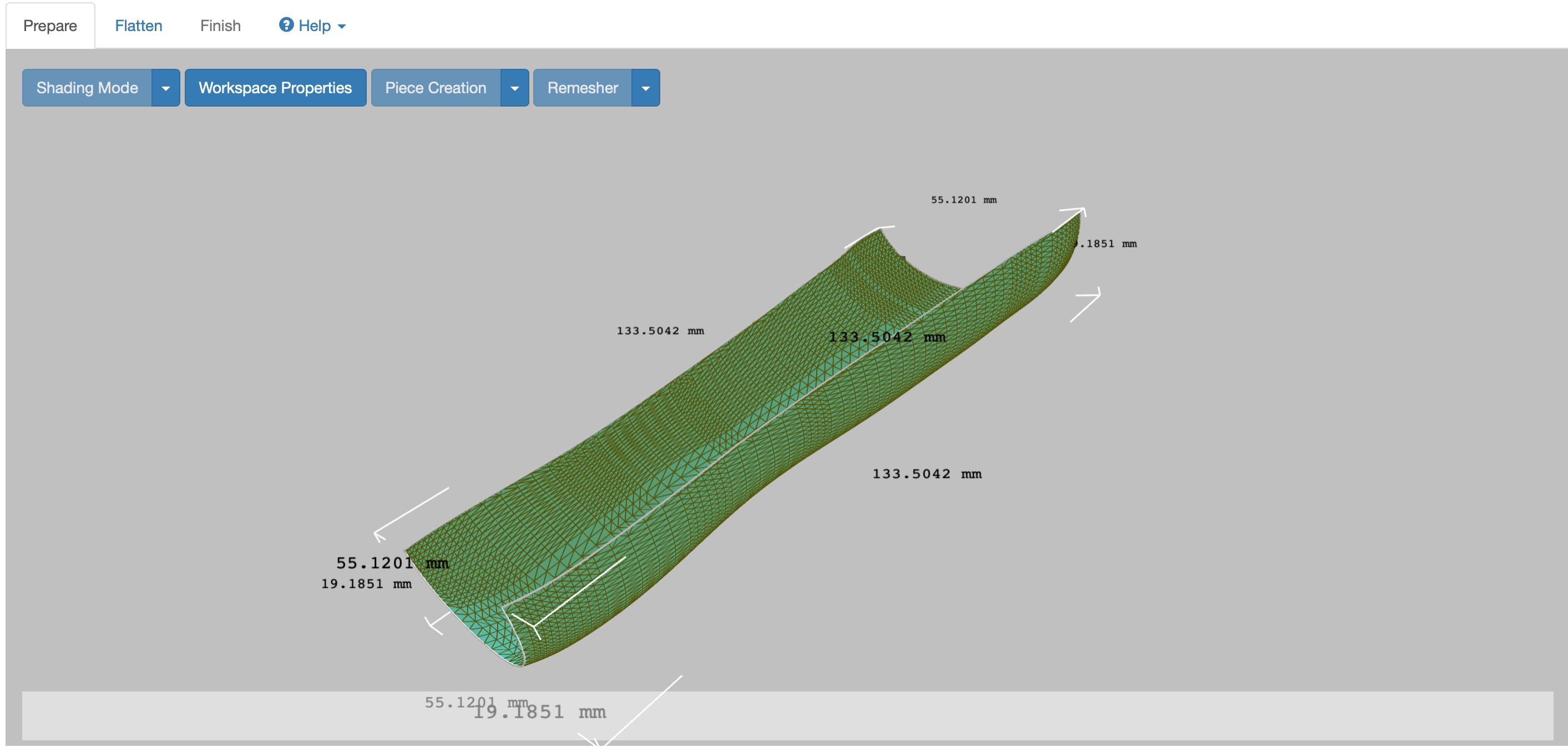
MODELING: from 3D to 2D
The patterns were then cut with a laser. Adaptive analysis of the curvature and design of the 3D mesh is possible with the help of the software used, creating a planimetry of the model. This software has the advantage that it is possible to assign certain properties to the material, in this case fabric or a more flexible material. In addition, seam allowances can be freely selected. For this model, a cotton and polyester fabric was used to allow easy washing and easy integration of conductive textiles.
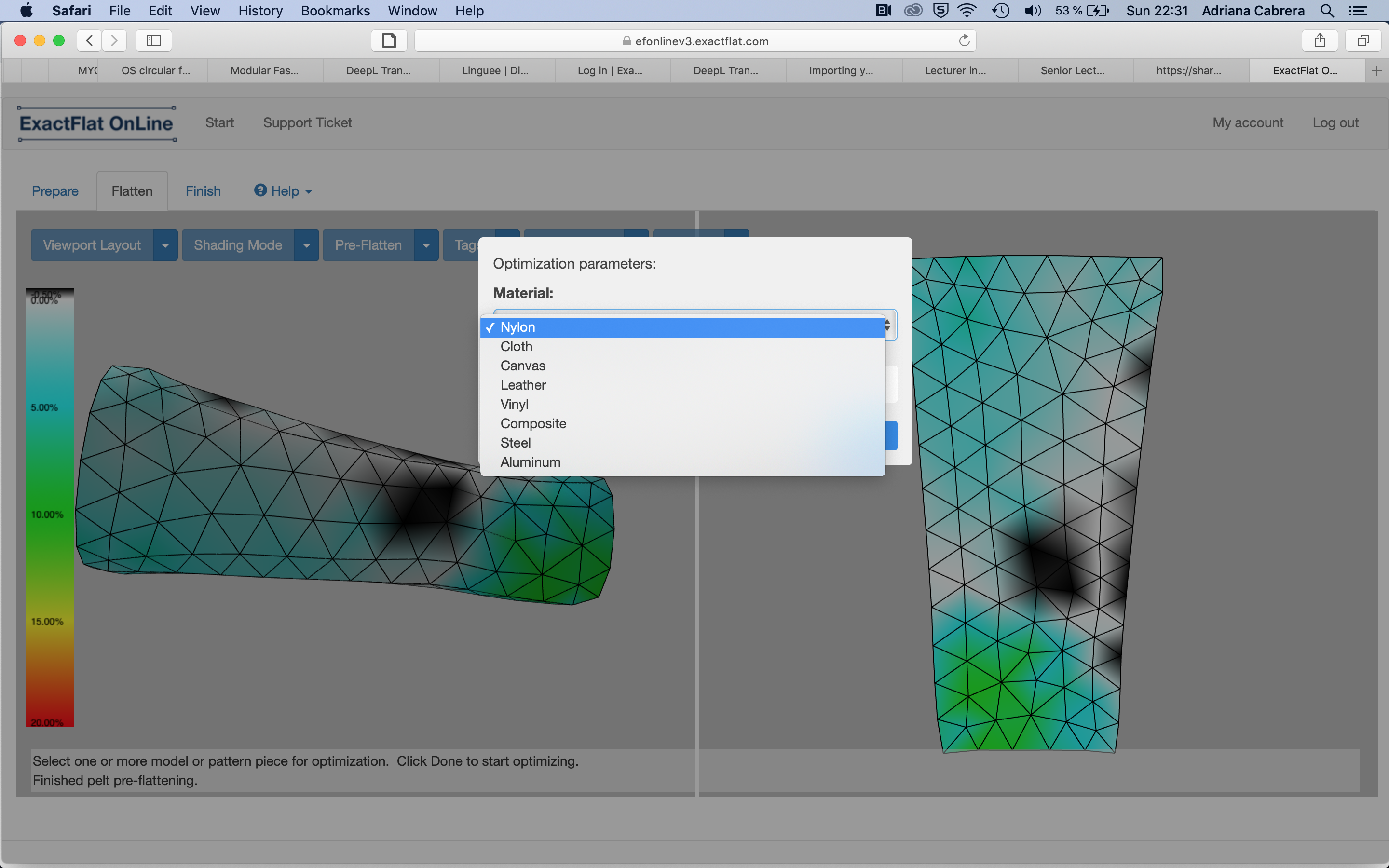
CIRCUITRY
A basic circuit for switching the heater of the lower arm warmer on and off was produced. The design of the board for the connection to the heater had to meet two requirements:
1. it must be minimal to require little area.
2. it must allow connection to the heating yarns incorporated in the forearm warmer.
The first design was made from a conductive textile of polyamide with silver-plated copper.
The second attempt was made with copper tape using a plotter placing Three layers: a flexible PP substrate and two layers of copper tape as cover tape over the mat to produce a sandwich construction.
A third version of the board was fabricated with an FR2 laminated PCB as substrate.
Finally, a casting embedding the board in silicone was made to insulate the components and protect them in the washing process.
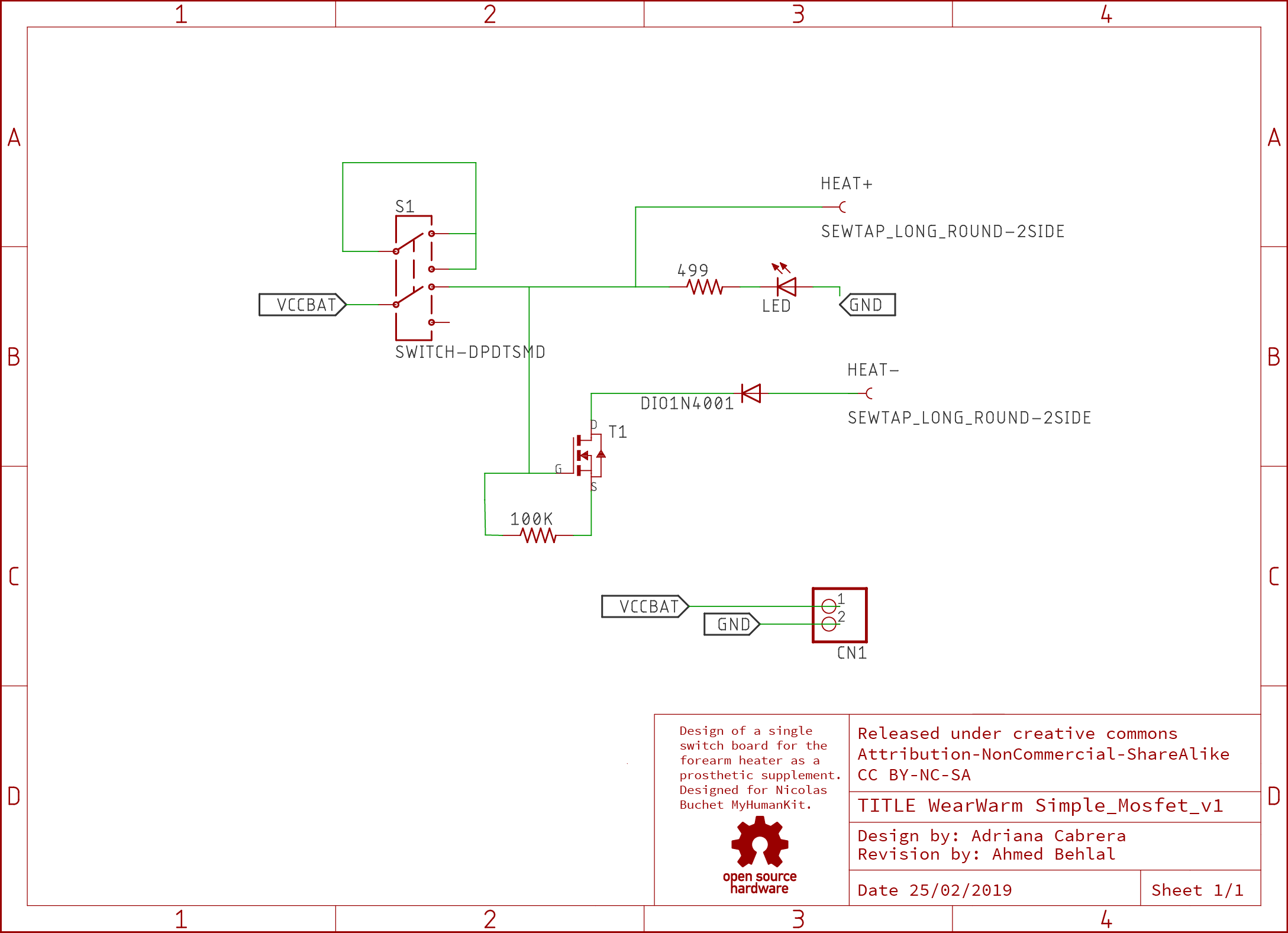
Content made on Kapwing
EMBROIDERY
Draft and stitches: To maintain the elasticity of the fabric, a zigzag pattern was implemented, which also accommodates the cutting pattern. It should be noted that normally the bobbin thread has to compensate the tension because it is thinner than the upper thread.
ASSEMBLY
After the respective functional tests of the actuator with the circuit board had been carried out, the corresponding thread connections were attached to the flexible circuit board, which had been produced as a second circuit attempt. Finally, the two textile parts and the entire forearm protection were assembled. Finally, the circuit board and the battery were connected to the heating tracing pad. While the battery can be easily removed for washing, the seam securing the circuit board must be opened and later closed again. A more practical solution would have to be found for further prototypes.t
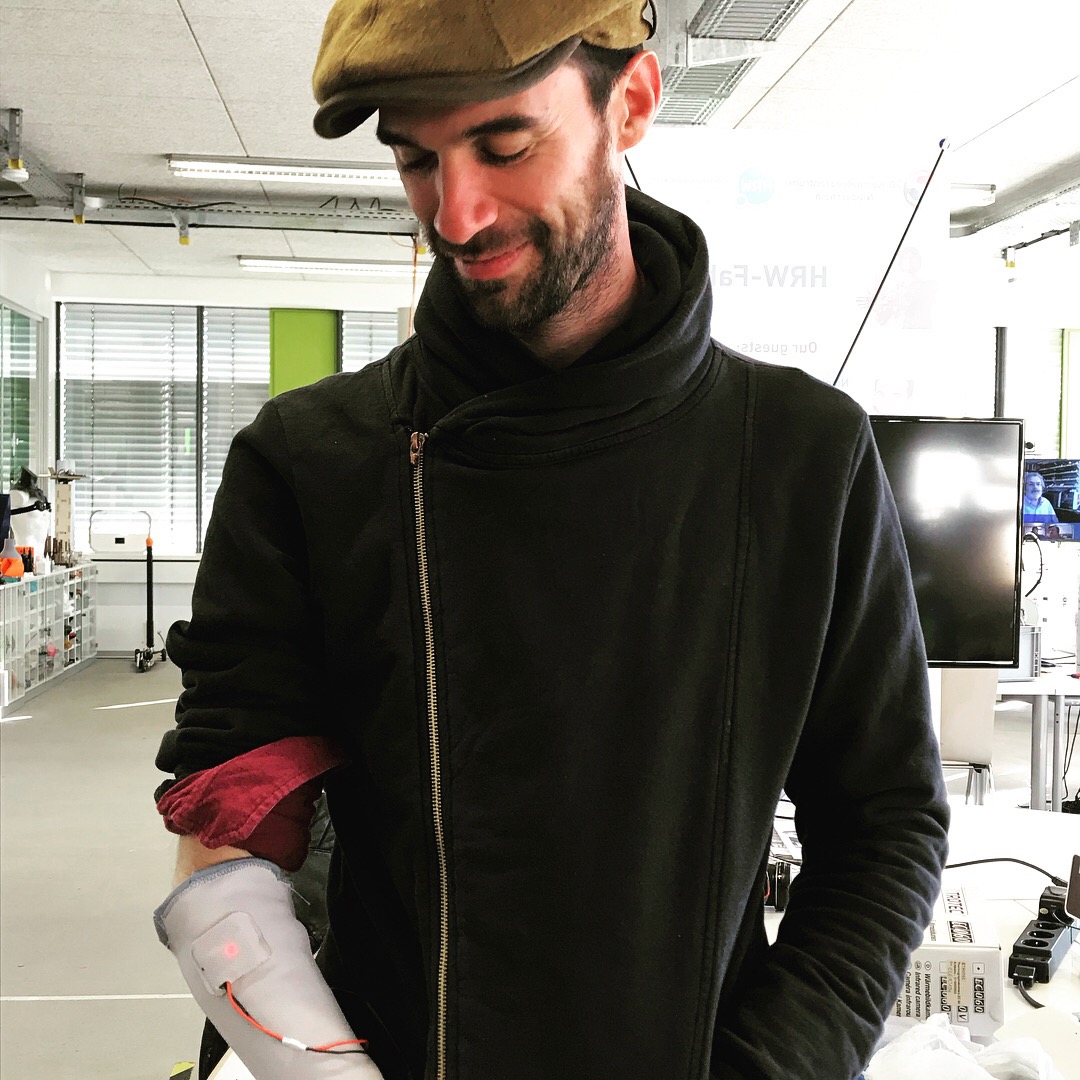
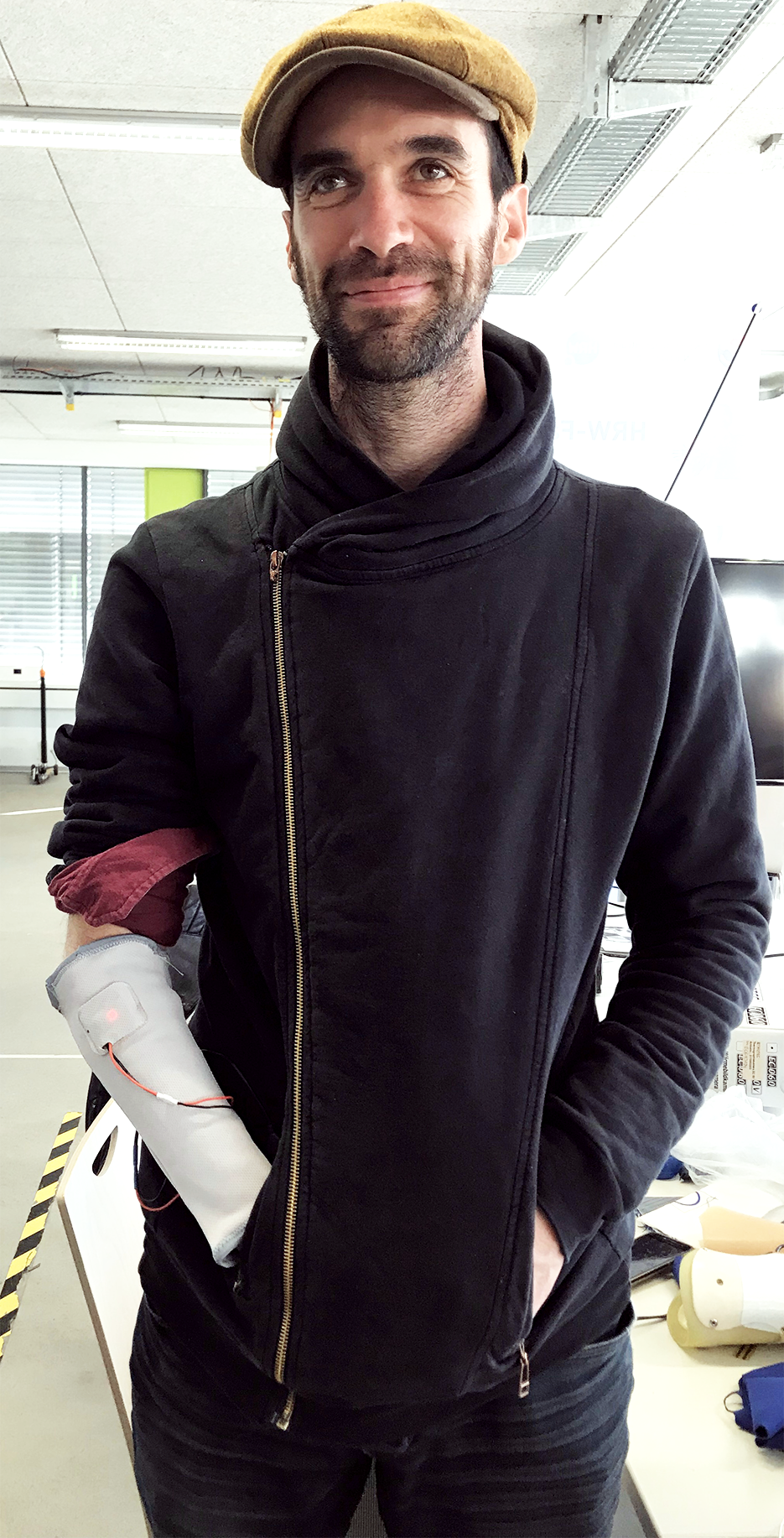
Mit Herz und Hightech - Wie Menschen Herausforderungen meistern